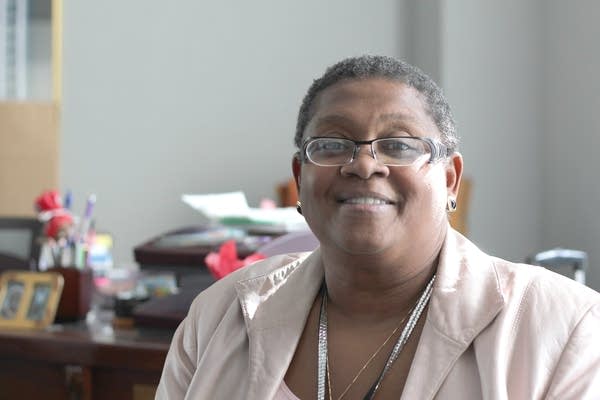Mpls. schools to revive autonomy plan amid mixed results in US
Go Deeper.
Create an account or log in to save stories.
Like this?
Thanks for liking this story! We have added it to a list of your favorite stories.

In the latest effort to boost student performance, the Minneapolis school district wants to give more autonomy to individual schools.
Under the effort schools would have discretion over budgeting, hiring, scheduling and curriculum.
It's not exactly a new idea: School districts across the country have experimented with similar systems over the last 15 years, and researchers say the results so far have been mixed.
In Minneapolis, school leaders are frustrated over student performance. There have been small improvements lately, but the number of students who graduate in four years is still only 50 percent.
Turn Up Your Support
MPR News helps you turn down the noise and build shared understanding. Turn up your support for this public resource and keep trusted journalism accessible to all.
A significant achievement gap exists between white students and students of color as well: 70 percent of white students graduate in four years, but for African-American and Latino students it's less than 37 percent. Only a quarter of American Indian students graduate on time.
Last week Minneapolis Superintendent Bernadeia Johnson said she hoped that more autonomy for schools is the answer.
The central office should not tell schools how to do their jobs, Johnson said.
"Once [the teachers] close the doors to their classrooms each morning they do whatever they feel is necessary, not what the central office is mandating that week."
"Let's not hold back and create barriers to kids not being successful," she said. "Let's unleash that and give you the flexibility to do something else."
Under the proposal, Minneapolis schools could decide which teachers to hire and how much to pay them. The schools would also have the flexibility to decide the length of their school days and school years.
And school leaders, in cooperation with teachers, parents and community members, would decide what curriculum to use.
Minnesota charter schools operate in similar ways.
The idea is in its earliest stages. The district plans to work on the logistics next school year, then roll out the autonomy plan to about 20 percent of the district's lowest performing schools in the 2015-16 school year. Other schools could join later.
Key points in the plan still need to be ironed out with the teachers union.
In the 1990s, Minneapolis tried a similar move toward autonomy, but it fizzled.
District officials say their "site-based management" experiment did not hold schools accountable for performance. The new plan requires schools sign a performance contract with the district to receive autonomy.
Over the last decade and a half, scores of districts across the country have moved to give schools more autonomy.
It's something that New York City first tried in 2002. Eric Nadelstern, who helped develop the system as deputy chancellor for school support, said: "There's 70,000 teachers in New York, and once they close the doors to their classrooms each morning they do whatever they feel is necessary, not what the central office is mandating that week."
Nadelstern is retired now but said that throughout his years as a teacher, principal, superintendent and deputy chancellor, he maintained that principals, teachers and parents knew best.
"The people who know the kids, who've learned their names, who understand the communities they come from each morning and go home to each evening are in the best position to make those decisions," he said.
In the decade since New York combined school autonomy with other reforms, Nadelstern said the graduation rate has increased from 50 percent to 65 percent.
Boston started a similar effort in the mid-1990s with its Pilot School program.
At Fenway High School, a Pilot School just across the street from the famous ballpark of the same name, Peggy Kemp is the headmaster. Most of Kemp's students -- 87 percent -- are African-American or Latino, amd 69 percent are eligible for free or reduced lunch.
Students at Fenway routinely outperform their counterparts at district schools in Boston, Kemp said. For that she credits her school's autonomy.
"We have the freedom to design our own curriculum where the district does not say 'You must have X, Y and Z,'" she said.
The overall picture for Boston's Pilot Schools is less rosy. A 2009 study by the Boston Foundation found that while the schools had a positive effect on student scores in English language arts in the early grades, scores for math were no different from district schools.
In the middle grades, students in Pilot Schools actually lost ground. And the study found little difference between pilot schools and district schools in the upper grades.
Elizabeth Pauley, an education program director at the Boston Foundation, acknowledged that the results have been mixed.
But Pauley said the district is finding some success in applying the Pilot School approach to low-performing schools going through a turnaround.
"With the autonomous schools that they have inspired, in the balance we see more high performing schools than not," Pauley said.
Research has turned up similar findings across the country. School autonomy seems to work best in low-performing schools. Overall, however, it has less of an effect on school performance.
Despite those results, one researcher maintains school autonomy is a solid approach for schools.
"If you're going to hold principals and teachers accountable for their results, you've got to get them the freedom to do what's right," said Christine Campbell, a senior research analyst and policy director at the University of Washington's Center for Reinventing Public Education. "Otherwise, they're simply implementing the mandates of the district, and somehow it's their fault that it didn't work."
Campbell said that districts considering autonomy for schools should ease into the transition to give principals and teachers time adjust and train for the change.




